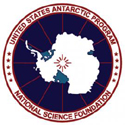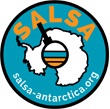Collaborative Research: Subglacial Antarctic Lakes Scientific Access (SALSA): Integrated study of carbon cycling in hydrologically-active subglacial environments

Project Description
This scientifically-integrated 3 year project will use a clean access hot water drill to penetrate Subglacial Lakes Mercer (SLM) and Engelhardt (SLE), two of the largest and most dynamic subglacial lakes on the Whillans Ice Plain. Both lakes are hydraulically active with water replacement times on the order of a decade and, by virtue of their different locations from the Ross Sea, should have been influenced differently by past grounding line oscillations. High resolution, time-evolving hydropotential maps of the environment will be developed from satellite and GPS data to provide information on the subglacial water dynamics, which affect ice stream stability and ecosystem processes. Samples of basal ice, sediments, and lake water will be collected to elucidate how relict organic matter (OM) deposited during marine incursions influences contemporary biodiversity and carbon cycling. An ROV will be deployed to make 3-D measurements of lake physical and chemical properties, to characterize sediments and basal ice and to obtain high resolution images of potential higher life forms.
Intellectual Merit
Antarctica has been conventionally viewed as a lifeless continent devoid of liquid water. It is now known that vast amounts of water are present beneath the Antarctic ice sheet in subglacial lakes and rivers, and that at least one hydraulically-active lake along the Siple Coast supports a diverse microbial ecosystem. The discovery of these ecosystems raises questions about the sources of water, carbon, energy and nutrients that drive biosynthesis in these subglacial environments. Given the history of grounding line changes in this region, **we hypothesize that sub-ice hydrology and relict deposits of marine OM regulate ecosystem processes in these active subglacial lakes**. This hypothesis will be tested through an integrated study of subglacial hydrology, lake OM, and geobiological processes in SLM and SLE. The proposed research will examine the legacy of past climate events on Whillans and Mercer ice streams and how these influence the structure and function of their contemporary subglacial ecosystems. The studies at SLM, which receives water from East Antarctica, will provide a first glimpse of subglacial conditions beneath the East Antarctic Ice Sheet. Exploration of these new frontiers through an integrated science program will improve our understanding of the Earth system and lead to globally relevant information about the importance of subglacial water on ice sheet stability, the OM fluxes onto the continent during past marine incursions, and the role of this relict OM in contemporary subglacial ecosystem processes.
https://salsa-antarctica.org/



